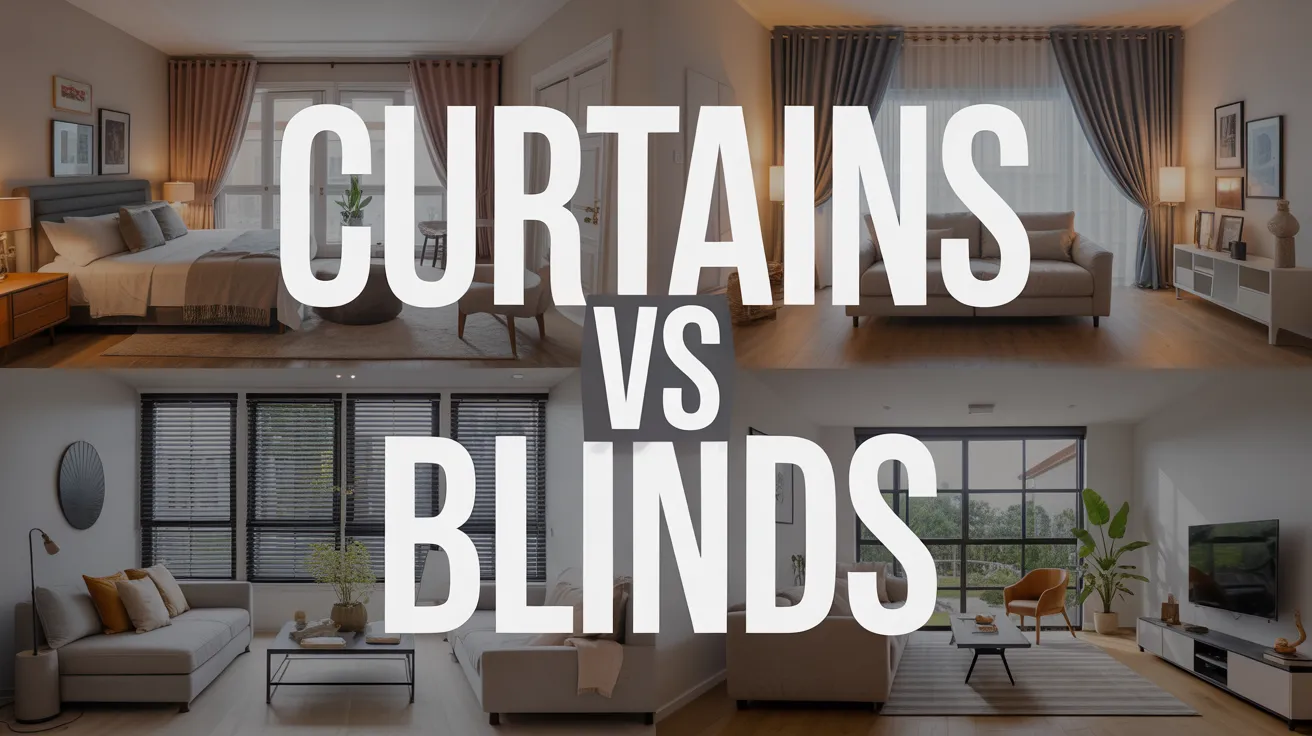How to Choose Between Curtains vs Blinds: The Complete Guide
Choosing between curtains vs blinds depends on the specific needs of a room, such as light control, privacy, and style preferences. Blinds offer precise light adjustment and are ideal for rooms needing glare control or moisture resistance, like kitchens and bathrooms. Curtains provide better insulation, soundproofing, and full light blockage, making them a strong choice for bedrooms and formal spaces.
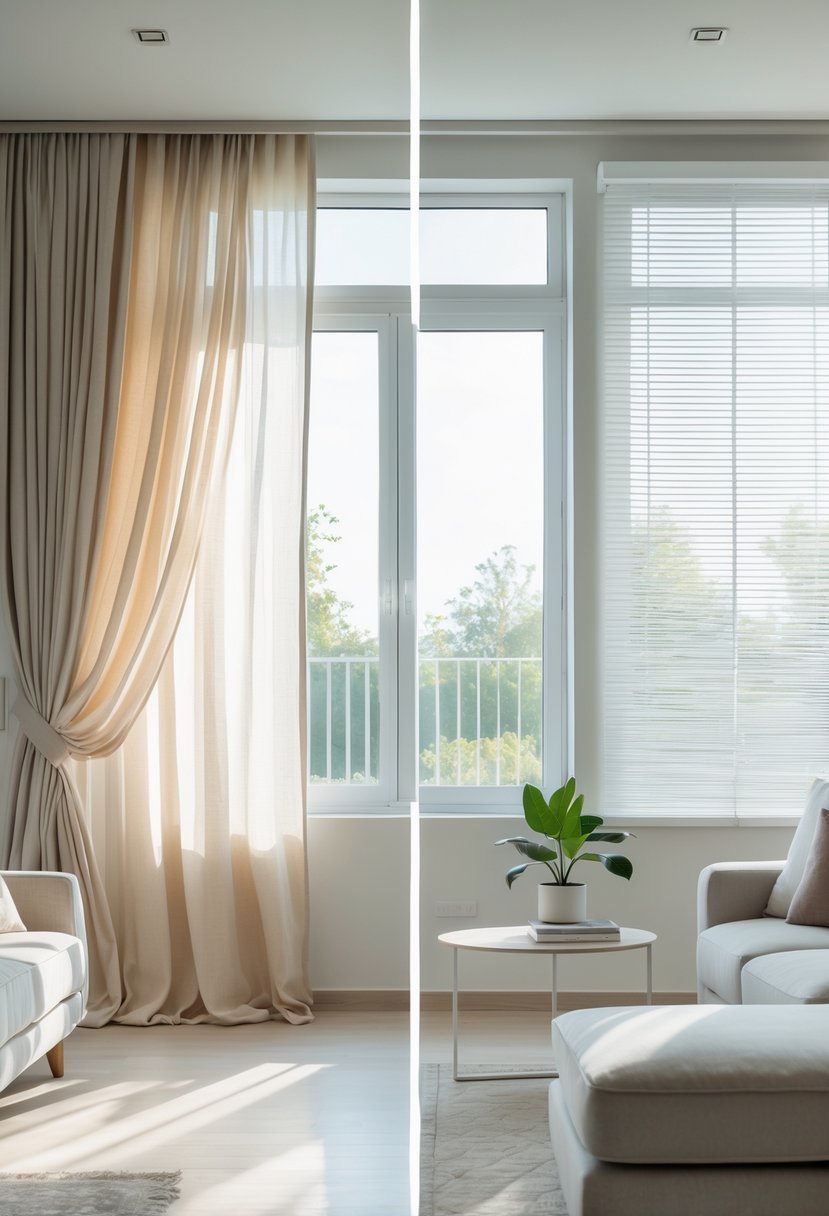
Each option has unique benefits and drawbacks tied to cost, maintenance, and design. Understanding these differences helps in selecting the right window treatment that fits both function and decor. This guide breaks down the key factors to consider for making a confident choice between curtains and blinds.
Curtains vs Blinds: Core Differences and Key Decision Factors
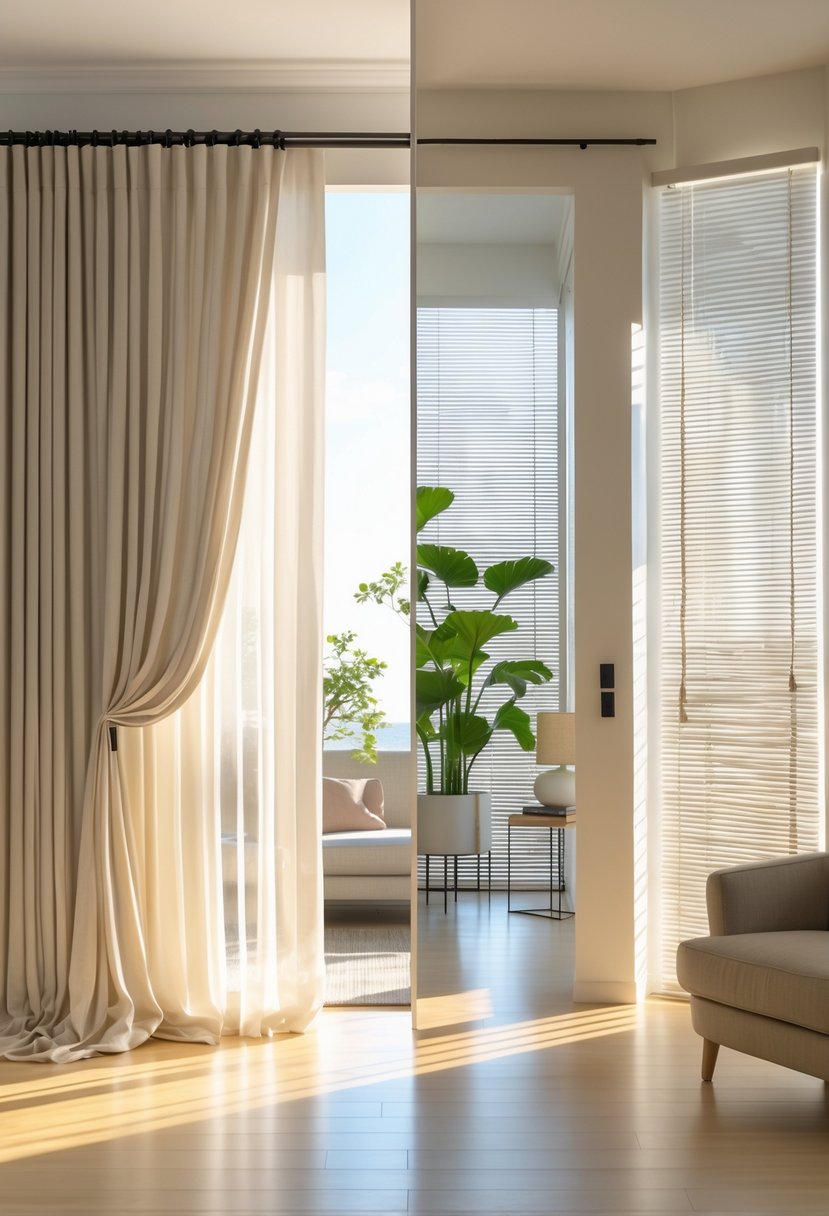
Choosing between curtains and blinds often comes down to how well each option manages light and privacy, fits with the room’s style, and suits the space available. Understanding these factors helps pick the right window treatment for specific needs, balancing function and design.
Light Control and Privacy
Blinds offer precise control of natural light because their slats, such as those in Venetian or vertical blinds, can be tilted to let light in while maintaining privacy. Blinds can be fully raised or lowered, adapting to different lighting needs throughout the day. However, they rarely block light completely, allowing some gaps between slats.
Curtains, especially blackout curtains, excel at blocking out all light when fully closed. This makes them ideal for bedrooms or home theaters where total darkness is preferred. Curtains provide better sound absorption and privacy since fabric panels cover the entire window surface without gaps. Cotton curtains are common for everyday privacy but allow some light to filter through.
Aesthetics and Interior Style
Blinds generally suit modern, minimalistic, or industrial-style interiors. They offer a clean, simple look with materials like wood, vinyl, or aluminum. Wood blinds especially pair well with transitional designs. Blinds usually come in solid colors and fewer style options, supporting a streamlined feel.
Curtains present more variety in textures, colors, and patterns. Materials range from cotton to silk, fitting classic, traditional, or eclectic décor. They add softness and warmth to a room and can make windows appear larger when hung “high and wide.” Curtains also let homeowners express personality through fabric choices and layering options.
Space and Room Considerations
Blinds are often better for small spaces or rooms with moisture, such as kitchens and bathrooms, because they need less room and resist mold more than fabric. Their slim profile helps maintain an uncluttered look, which works well in busy or compact areas.
Curtains require extra space for rod mounting and fabric draping, needs that can crowd narrow windows or tight rooms. They are better suited for larger spaces or formal living areas where a finished look is important. Layering curtains over blinds is also an option to enhance both insulation and decoration when space allows.
Practical Considerations: Maintenance, Insulation, and Cost
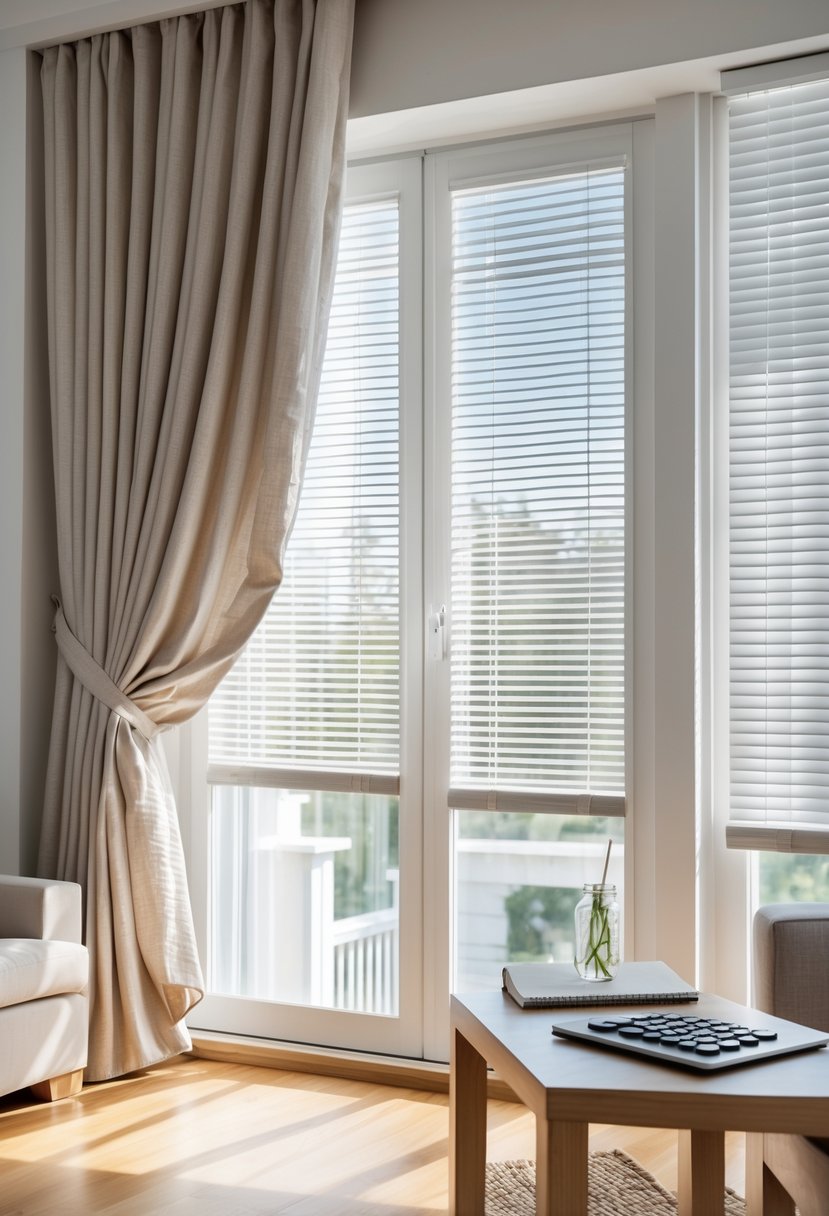
Choosing between curtains and blinds involves looking closely at cleaning needs, how well they insulate, and how much they cost over time. Each option handles these factors differently, affecting long-term use and comfort.
Cleaning and Maintenance Factors
Blinds are easier to clean because their hard surfaces only need dusting or wiping. A microfiber cloth or duster quickly removes dust from the slats. For tougher stains, a damp cloth with mild vinegar solution works well without damaging the material. Faux wood and PVC blinds resist moisture, making them good for kitchens or bathrooms.
Curtains require more care. They need vacuuming to remove dust and regular washing or dry cleaning to handle stains and dirt buildup. Heavier drapes may need professional cleaning, which adds to upkeep costs. Mold can appear if curtains hang in moist areas without proper ventilation. Fabric type greatly affects ease of maintenance.
Energy Efficiency and Insulation
Curtains generally provide better insulation and sound absorption. Thick or thermal drapes block heat loss in winter and reduce noise, making rooms warmer and quieter. They cut indoor heat gain by about 33% in summer, helping with cooling costs.
Blinds let some heat escape because of gaps between slats, so they are less effective in winter. However, reflective blinds reduce heat gain by up to 45% in summer, improving cooling efficiency. Blinds also aid in sound absorption but don’t block noise as well as dense curtains.
Budget and Long-Term Value
Blinds are often less expensive upfront and cheaper to install. Installation typically takes less than 20 minutes per window, and materials like vinyl or plastic lower costs. Blinds also tend to last 15 years or more with proper care.
Curtains cost more due to fabric and installation time. Heavier materials and intricate designs raise the price. Installation can take up to an hour per window, adding to expense. Curtains usually last about 10 years before needing replacement. However, they add value by enhancing room aesthetics and insulation.
Conclusion
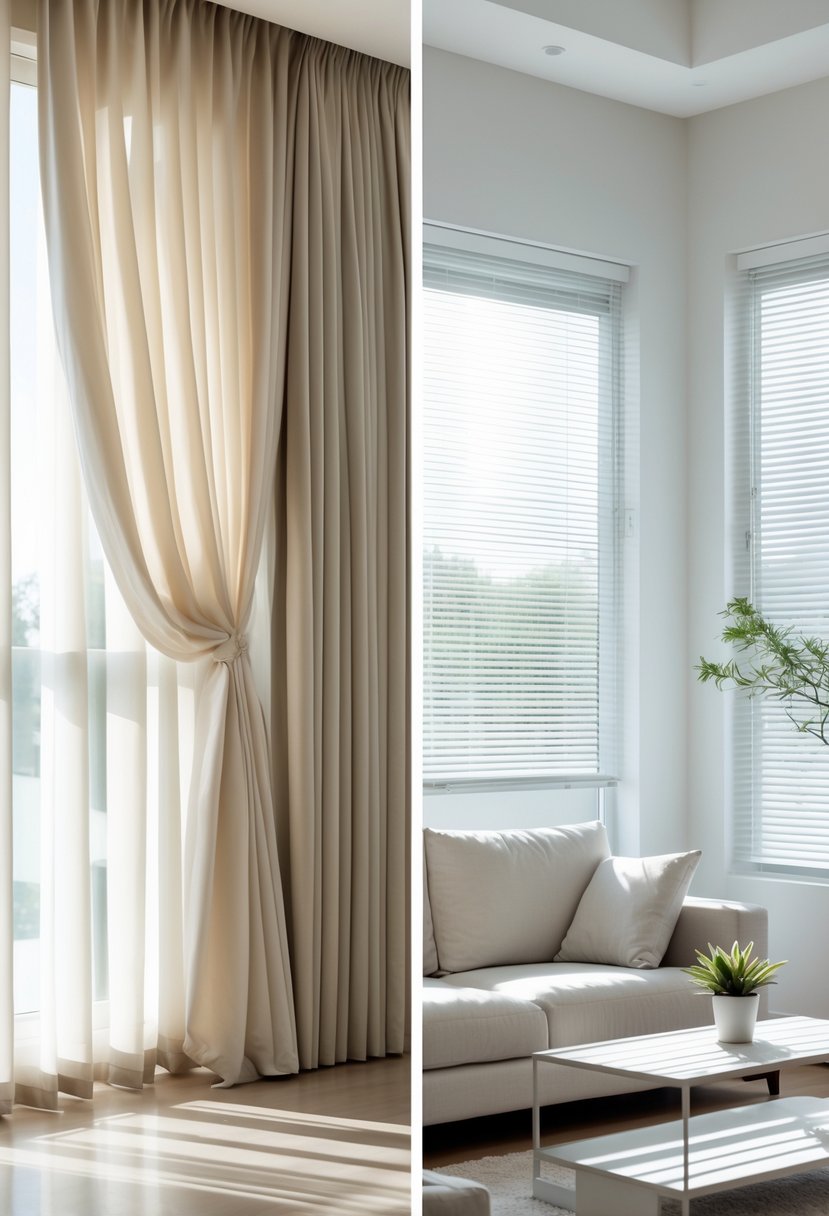
Choosing between curtains and blinds depends mostly on the needs of the room and personal style preferences. Blinds provide precise light control and require less maintenance. They work well in modern spaces and rooms with moisture, like kitchens or bathrooms.
Curtains offer better insulation and soundproofing. They come in many fabrics and styles, making them a good fit for bedrooms or formal living areas. Thick or blackout curtains help block light more effectively than blinds.
Cost and durability also play a role. Blinds tend to be less expensive and can last longer. Curtains usually cost more and might need replacing sooner, especially in moist environments.
Safety can be a concern with blinds that have cords, especially in homes with young children. Curtains generally pose fewer safety risks but might need regular cleaning.
Using both together can offer the best of both worlds. Layering blinds with curtains allows for flexible light control and enhances privacy while adding a decorative touch.
Key points to consider:
- Blinds: affordable, durable, precise light control, low maintenance, less insulating
- Curtains: stylish, insulating, soundproofing, available in many fabrics, more expensive
The choice depends on what works best for the space’s function, style, and budget.

